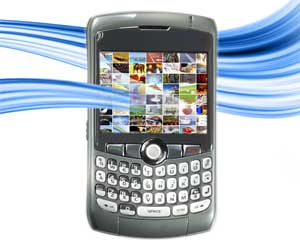- Category: September 2011
 For the past decade, it was all about the desktop experience. Now, the mobile experience has become the new black. With a projected rise of +21% CAGR in mobile internet users in APJ between 2010 and 2015, the number of mobile subscribers will reach 1.36 billion in 2015, according to research recently published by Research and Markets.
For the past decade, it was all about the desktop experience. Now, the mobile experience has become the new black. With a projected rise of +21% CAGR in mobile internet users in APJ between 2010 and 2015, the number of mobile subscribers will reach 1.36 billion in 2015, according to research recently published by Research and Markets.
It’s the mobile era. Users want to get their information anywhere, anytime. Mobile devices offer a sense of instant gratification that cannot be duplicated on the desktop. So what affects the success of email marketing in this mobile age?
Here are three key points that will help you succeed in mobile email marketing:
1) Timeliness
Effective communication and engagement is all about timeliness. It is about getting your potential customer hooked at the right point in time to match their needs or wants with what you can offer. It’s about sending the message in a timely fashion and making sure it’s well received.
The best time to get your target audience interested is when they are engaged with your brand. Say for example you are an online shop that has just newly started. When a customer is surfing for products on your webpage or mobile app, there can be a small banner advertisement offering promotions on that particular product that comes with the condition of signing up with your email marketing list.
2) Format
It has been researched and proven that email is the No. 1 activity that consumers spend their time on when using their mobile devices. Emailing was made for mobile devices. In order to ride on the bandwagon of this trend, brands need to re-design the contents of their email marketing campaign for multiple mobile platforms. This means that besides making use of plain text and web links, brands can capitalize on the technology of mobile platforms to create more dynamic, rich and personalized content.
In addition, email widths have to be narrower, and the fonts have to be larger to be more legible on smaller screens. The space between links and the size of buttons have to be wider to facilitate navigation for users.
3) Conversation
Email marketing began as a form of linear communication when marketers sent e-pamphlets and e-newsletters to their distribution list to market products and inform potential customers about promotions. As the trend moves to a more transactional model of communication, email marketers need to engage their consumers. Now, brands should use personalization and send targeted messages integrating web and CRM analytics instead of broadcasting messages to any and everybody.
Engagement can be in the form of an invitation to interact through reviews, polls and social networks. As such, these email messages become more of an invite to participate in the conversation resulting in a higher probability of response.
By Rohit Dadwal, Managing Director, Mobile Marketing Association Asia Pacific Limited



















